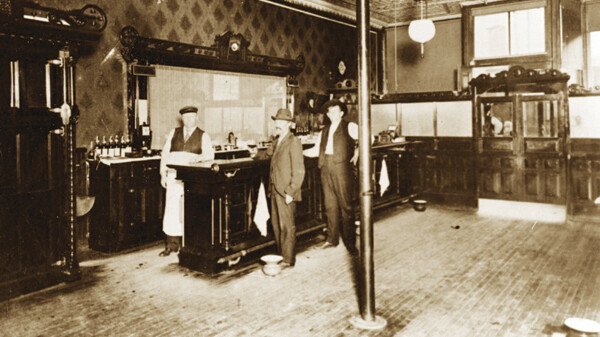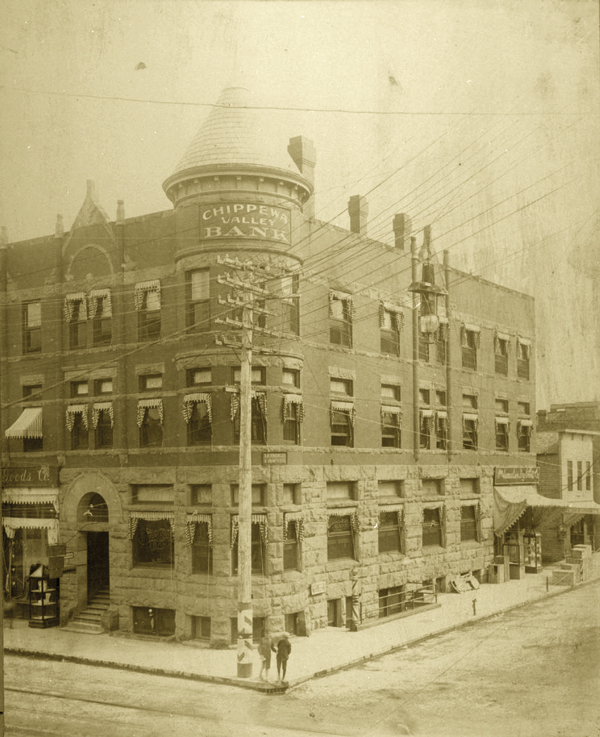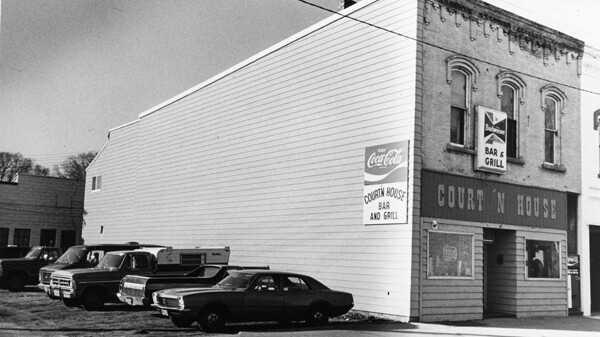5 of Eau Claire's Timeless Taverns
exploring the stories behind of some of the Chippewa Valley’s historic watering holes
V1 Staff |

In a place with so much history, it’s no surprise that many of our drinking establishments – and the buildings they call home – have long and fascinating stories. The places where we now gather with friends for a few beverages have been candy stores and (possibly) speakeasies, banks and (maybe) bare-knuckle boxing venues. So pull up a stool and learn about days gone by. Don’t worry, this history lesson isn’t a dry one (except during Prohibition, maybe).
1. Wigwam Tavern
314 E. Madison St., Eau Claire
The building housing the Wigwam Tavern was built in 1883 as Nehers Drug Store, and was renamed Quality Drug Store in 1910. In 1913, it was The Home Bakery, before it was purchased by L.E. Phillips and turned into a tobacco distributor. Its first listing as a tavern was in a 1935 directory, where it was called Ray’s Tavern. (No word on whether or not they served roast beef sandwiches on napkins.) In 1939, the building was purchased by Jake Geisert, who renamed it the Wigwam. When Jake died, the business was taken over by his son, George, who ran it for 40 years, before it was purchased by its current owners, Dave and Erica Ottosen. According to stories, George’s grandparents may have been bootleggers during Prohibition, and there are stories of bare-knuckle boxing and gambling in the basement during the era. Since early city directories list the residence of the first owners on the same street as the tavern itself, it can be speculated that the house and tavern were attached. It is likely, then, that it functioned as a speakeasy during Prohibition.

2. Stones Throw
304 Eau Claire St., Eau Claire
This longtime Eau Claire nightspot occupies part of the historic Barnes Block, a massive stone-and-brick Victorian building erected in 1893-94 at the corner of South Barstow and Eau Claire streets. The structure, also called the Cameron-Drummond-Slagsvold Building (say that five times fast!) was once home to the Chippewa Valley Bank and Samuelson’s Department Store. In 1979, stained-glass artist Frank Stone founded the Stones Throw as an upscale restaurant with a large main room, upper level balcony, and a kitchen and dining room on the lower level. In 1981, Stone turned to blues musician James Solberg to run music. By 1984, however, Stone was forced to turn the building over to the bank, and Fred Kappus was hired to manage the property. A few years later, Kappus and a partner bought it. In 1986, Solberg took over the Stones Throw’s lease and began what some have called its heyday, when it hosted lots of big-name music acts. In 1993, Solberg sold the place to another musician, Leigh Carey, and after that it changed hands frequently: In 1995, Wayne Marek bought it and turned it into The Trading Company, a gay dance club. In 1997, Chuck Wilke took over, called it the Cornerstone, and tried live music again. He later changed it back to a gay bar, called CJ’s Great Escape, before selling it to Kappus, the landlord, in 2001. Soon, Kappus sold his shares to Joseph LaPoint and Steve and Lorrie Anderson. During this time the Stones Throw experienced another musical upsurge. It was sold to Ryan O’Connor and his mother, Sue, in 2005, and a little over a year after that, Jon Marlier and Andrew Pernsteiner took over for about three years. Today, the establishment is operated by landlord John Mogensen and features live music and comedy.

3. Girolamo’s Court’n House
113 W. Grand Ave., Eau Claire
The Court’n House started off as Oberg & Schlieve Hardware Store from 1908-20, and in the decade that followed it went through several business changes. The building housed John Goulette Beverages, Delicious Foods, Drake-Rea Company Autos, and Food Products Company throughout the years. It was also Bill Mooney’s Bar and Grill from 1950-74 before it became the Court’n House of today.
4. The Pioneer
401 Water St., Eau Claire
The Pioneer Tavern on Water Street was established in 1984, yet the building in which it resides has been around since the late 1800s. The original building burned in April 1882 in a fire that destroyed most of the westside business district. It was replaced with the building that now holds the Pioneer, although in the interim it was a furniture store, drugstore, and Hansen Beverages.
5. The Grand Illusion
418 Water St., Eau Claire
This 19th-century building has housed a tavern (except for during Prohibition when it was listed as a “restaurant”) for nearly a century. The building was a candy shop from the late 1880s to the early decades of the 1900s. For 30 years after 1920, it was owned by Alfred Couture and his family. The establishment went through several ownership changes in the 1950s and then was Dale’s Blue Front Tavern for more than 15 years. After than, it became the Stable Saloon and (briefly) Lord Jeffries Pub. Since 1988, however, it’s been The Grand Illusion, complete with stiff drinks, loud music, secluded booths, and rock ’n’ roll artwork.
Compiled by Tom Giffey, Kristin Frosch, Carrie Weiss, and Frank Smoot


















